
Unit 5 Assignments
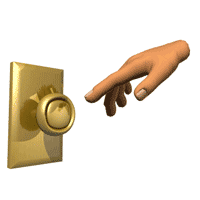
Static & Magnets
MS-PS2-5
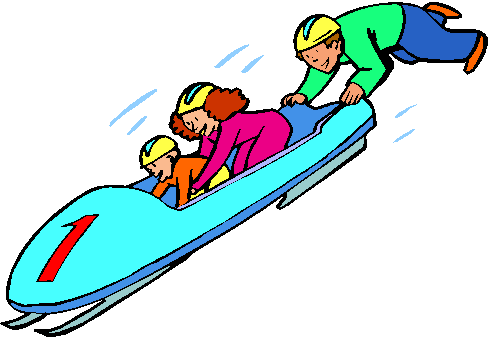
Gravity
MS-PS2-4

Energy
MS-PS3-2
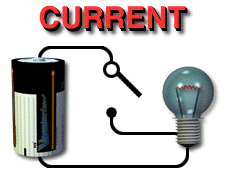
Electric Current
 |
Unit 5 Assignments |
 Static & Magnets MS-PS2-5 |
 Gravity MS-PS2-4 |
 Energy MS-PS3-2 |
|
Gap Lessons --> |
 Electric Current |
|
Electromagnetism |
| Bundle 5 How can objects interact at a distance? |
|
MS-PS2-3
Evidence Statement Ask questions about data to determine the factors that affect the strength of electric and magnetic forces. Packet [Clarification Statement: Examples of devices that use electric and magnetic forces could include electromagnets, electric motors, or generators. Examples of data could include the effect of the number of turns of wire on the strength of an electromagnet, or the effect of increasing the number or strength of magnets on the speed of an electric motor.] [Assessment Boundary: Assessment about questions that require quantitative answers is limited to proportional reasoning and algebraic thinking.] |
| MS-PS2-5.
Evidence Statement Conduct an investigation and evaluate the experimental design to provide evidence that fields exist between objects exerting forces on each other even though the objects are not in contact. Packet [Clarification Statement: Examples of this phenomenon could include the interactions of magnets, electrically-charged strips of tape, and electrically-charged pith balls. Examples of investigations could include first-hand experiences or simulations.] [Assessment Boundary: Assessment is limited to electric and magnetic fields, and limited to qualitative evidence for the existence of fields.] |
| The concept that, when
two objects interact, each one exerts a force on the other that can
cause energy to be transferred to or from the object (PS3.C as in
MS-PS3-2) can connect to the idea that forces that act at a distance
(electric and magnetic) can be explained by fields that extend through
space (PS2.B as in MS-PS2-5). These ideas also connect to the concept
that electric and magnetic (electromagnetic) forces can be attractive or
repulsive, and their sizes depend on the magnitudes of the charges,
currents, or magnetic strengths involved and on the distances between
the interacting objects (PS2.B as in MS-PS2-3). Additionally, these ideas about forces that act at a distance can be connected to the concept that gravitational forces are always attractive; there is a gravitational force between any two masses, but it is very small except when one or both of the objects have large mass—e.g., Earth and the sun (PS2.B as in MS-PS2-4). Then, gravitational forces connect to the concepts that the solar system consists of the sun and a collection of objects, including planets, their moons, and asteroids that are held in orbit around the sun by its gravitational pull on them (ESS1.B as in MS-ESS1-3 and MS-ESS1-2) and this model of the solar system can explain eclipses of the sun and the moon. Earth’s spin axis is fixed in direction over the short-term but tilted relative to its orbit around the sun. The seasons are a result of that tilt and are caused by the differential intensity of sunlight on different areas of Earth across the year (ESS1.B as in MS-ESS1-1). |
|
Take every day before sleeping! Vocabulary Review Activities 
|
Vocabulary ElectroMagnets Chapter 1, Section 4 Pages 31 & 38-40 Textbook 2010 2010 Book 2010Audio Electric Motors Chapter 3, Section1 Pages 78-83 Generating Electric Current Chapter 3, Section2 Pages 84-87 Electromagnetism booklet - Worksheet Edison booklet - Worksheet Science Skills Handbook Appendix: Pages 202-214: Process Skills Packet (Online Textbook: Log onto Pearson.com, then click on the titles above for the online text.) |
| Labs & Videos |
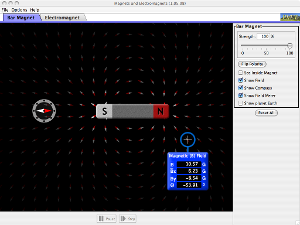 Magnets and Electromagnets write up an experiment based on this activity. |
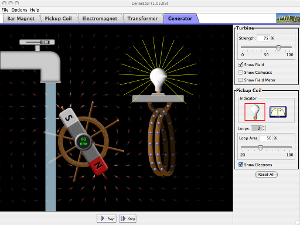 Generator write up an experiment based on this activity. |
 Faraday's Law write up an experiment based on this activity. |
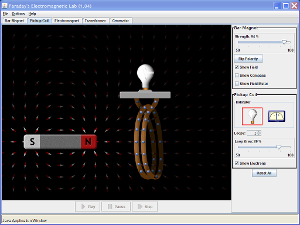 Faraday's Elect romagnetic Lab Practice Lab Write-Up
|
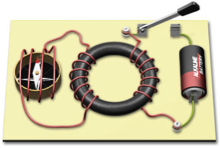 Induction Applet |
 Generator |
Wire Current-Magnetic Field |
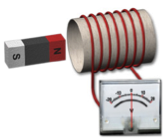 Solenoid Induction |
 Solenoid and Compass |
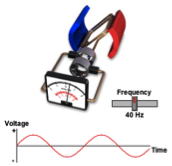 AC Generator DC Generator |
 Lenz's Law |
 Transformer |
|
Gizmos Magnetism Worksheet |
Gizmos Magnetic Induction Worksheet |
Gizmos Electromagnetic Induction Worksheet |
Snaptricity Lesson 3 Electromagnets PS2-3 Lab Write-Up - vary voltage,current, or wire |
| Magnet
Lab Interactive Tutorials Science Demonstrations Solenoid Page |
EnergyQuest
Electromagnet Project TechnologyStudent.Com Electronics Lessons THE INTERNET PLASMA PHYSICS EDUCATION Electricity & Magnetism Tutorial |
 Snap Circuits FM Radio and Amplifier |
 SnapCircuits Jr. Electronics Projects Lesson 1 Electronic Devices, Sources, Conductors |
|
Disney Imagineering Electricity Video & Quiz Disney Imagineering Imagineering Magnetism & Quiz |
 Magnetic Field From Current Electric Motors |
MS-PS2-3. Ask
questions about data to determine the factors that affect the strength of
electric and magnetic forces. MS-PS2-5. Conduct an investigation and evaluate the experimental design to provide evidence that fields exist between objects exerting forces on each other even though the objects are not in contact. Simulation Assessments & Alternatives |
Snaptricity Lesson 2 Circuits - Circuits kit Volts, Amps, Ohms, Series, Parallel, Conductors, Insulators, Switches 13 Ohms, 22-23 Batteries, 17-18 Lights, 19-21 Worksheet |
| Engage Discrepant Event |
Explore Research |
Explain Write-Up |
Elaborate New situations/applications |
Evaluate project to share |
| Reading & Math Work |
|
|
| Projects by Learning Style and Media Type |
 Sensing-Thinking
(Mastery) Sensing-Thinking
(Mastery)Facts
|
 Sensing-Feeling
(Interpersonal) Sensing-Feeling
(Interpersonal)A time when you...
|
 Intuitive-Thinking
(Understanding) Intuitive-Thinking
(Understanding)Playing with facts
|
 Intuitive-Feeling
(Self-Expressive) Intuitive-Feeling
(Self-Expressive)Creating new possibiliteis
|
|
|
|
 Live
Presentation Project Live
Presentation Project
|
| Essential Vocabulary & Concepts |
| Picture | Core Knowledge or
Concept |
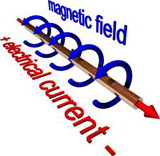 |
Whenever
electrons flow , they generate a magnetic field that wraps around the
direction of the current. If you move a magnet near a coil of wire, a electrons begin to flow in the circuit. This relationship is know as electromagnetism. |
 |
A solenoid is a coil of wire that increases the electromagnetic effect. The ends of the coil become the north and south poles of the magnetic field. |
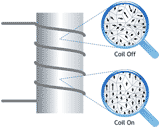 |
A solenoid's
magnetic field has three properties.
|
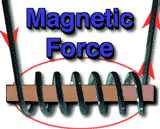 |
Adding a ferromagnetic material
inside the coil creates an electromagnet. An electromagnet can be made stronger by:
|
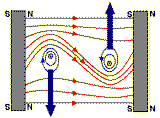 |
When a
current-carrying wire is placed in a magnetic field, electrical energy is converted into mechanical energy. |
 |
Moving a
magnetic field near a solenoid generates
an electrical current. |
 |
An electric motor is a device that uses an electric current to turn an axle. An electric motor converts electrical energy into mechanical energy. |
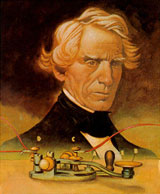 |
Scientist Samuel Morse (1791-1872) inventor who improved the telegraph and developed a binary communications method (Morse Code) that is the basis of digital communications today (digital computers& media.) |
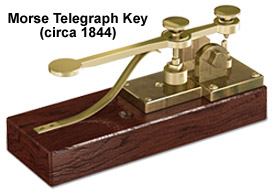 Animation |
Technology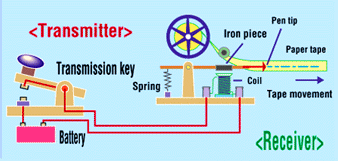 The telegraph was the 'father' of modern telephones & computers today. It used electro - magnets to communicate 'dots and dashes' over thousands of miles acrossf oceans before wireless radios. |